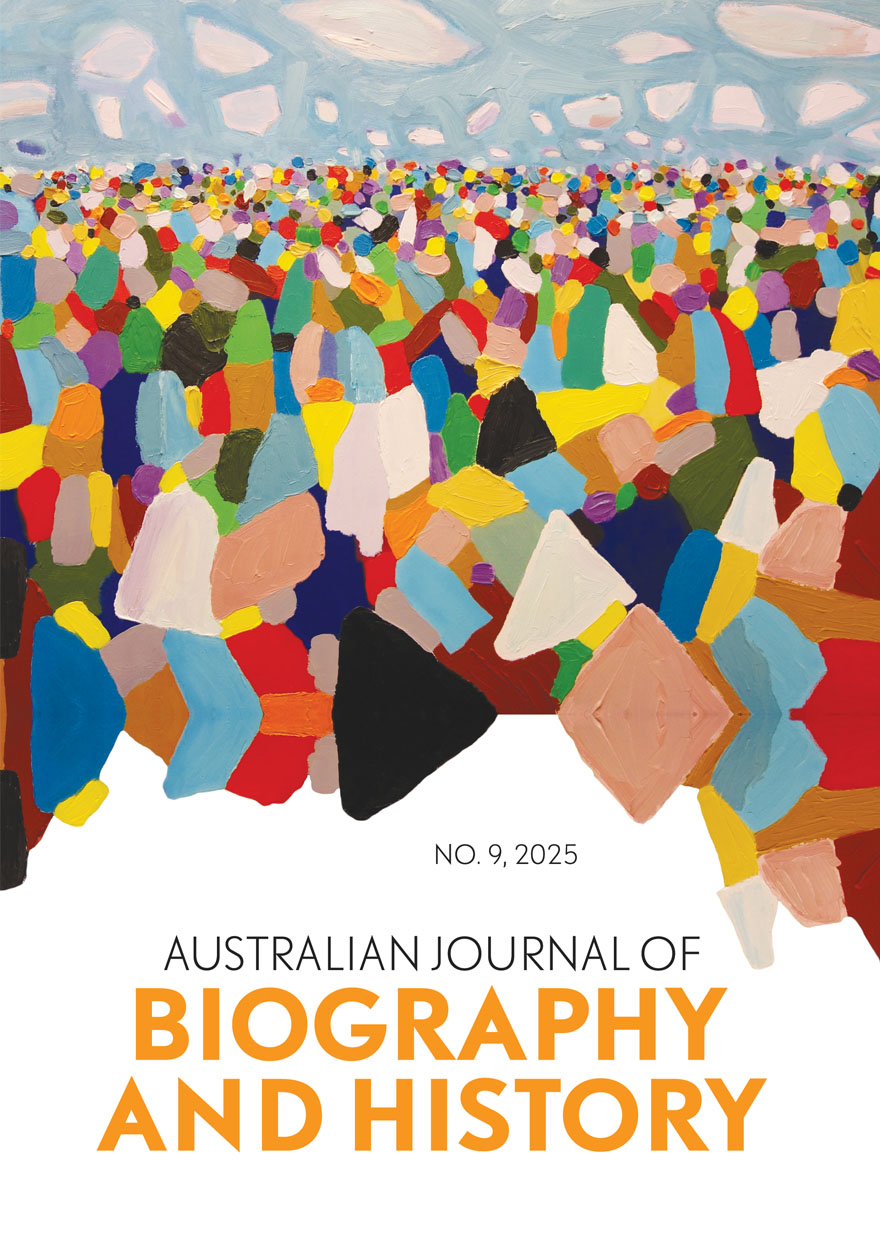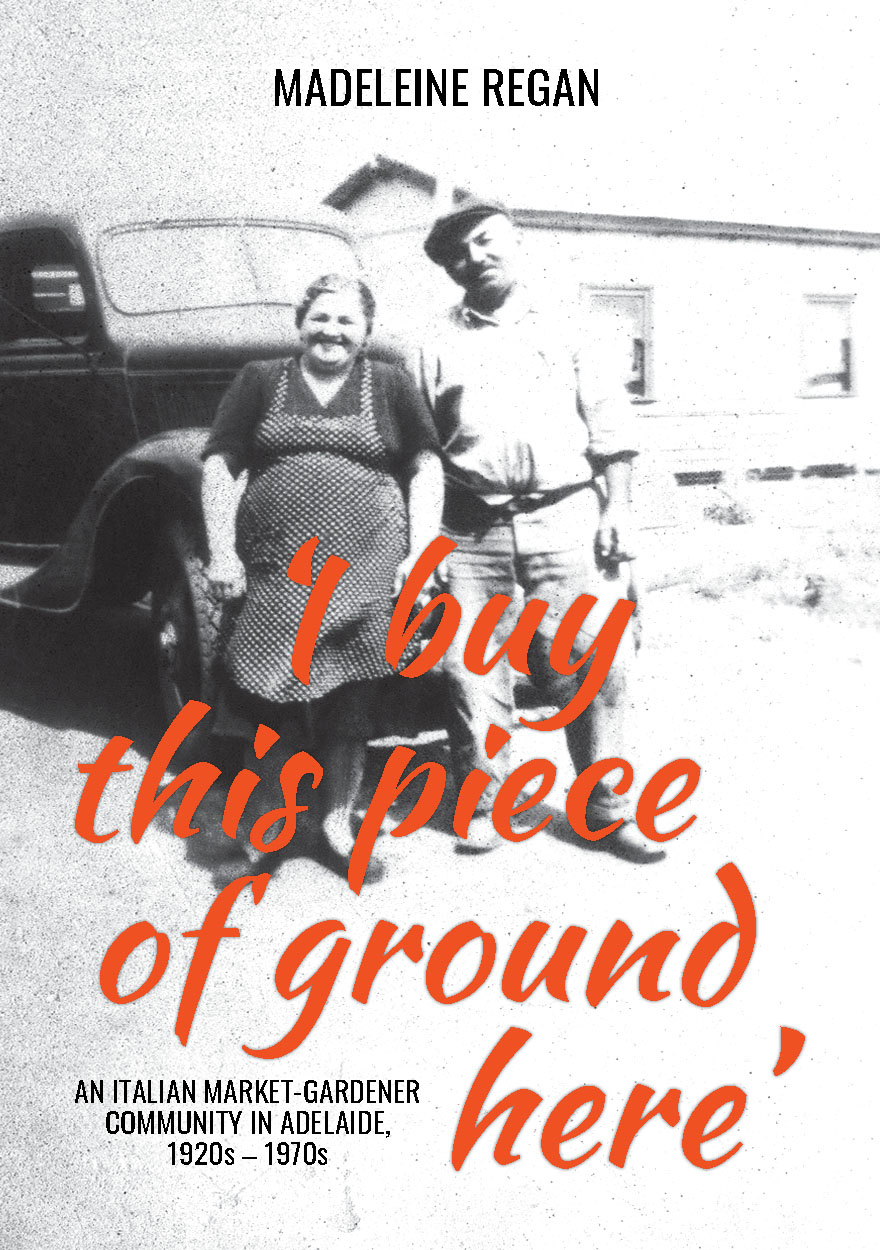
Australian Journal of Biography and History: No. 4, 2020
Please read Conditions of use before downloading the formats.
Description
This issue of the Australian Journal of Biography and History includes eight peer-reviewed articles, and 12 book reviews. Each of the articles uses biography to illustrate historical themes and to add texture to historical episodes. Patricia Clarke examines the role of four women journalists who were recruited by the Australian Government to tour operational bases in eastern Australia during a critical phase in the Pacific War. In the field of journalism, women faced systemic barriers to employment; the women described in Clarke’s article went to great efforts to attain equality in the workplace, yet they were often restricted to weekly publications while the dailies remained the province of men. Lyndon and Lyne Megarrity, in their article on the two wives of the Queensland businessman and later premier Robert Philp (1899–1903, 1907–08), use the biographies of Jessie (née Bannister; 1856–90), and Mina (née Munro; 1867–1940) to illustrate the changes in the role of elite Queensland women over the relatively short period of a decade.
The next two articles consider the problems of constructing biographies of those who are essentially invisible in the historical record. Melanie Nolan, Christine Fernon and Rebecca Kippen discuss the ’first-fleeter’ Sarah Bellamy’s seemingly ‘insignificant life’ to illustrate various aspects of the British colonisation of the continent. The biography of the Boonwurrung man Kurrburra (1797–1849) forms the subject of the contribution by Ian Clark, Rolf Schlagloth, Fred Cahir and Gabrielle McGinnis. By setting out to consider the whole of Kurrburra’s life rather than only the moments of contact (or conflict) with colonial society, he can be re-presented as one who was respected and important in his Aboriginal community, and who managed, negotiated and sought to control his interactions with the colonising forces.
Sophie Scott-Brown, in her article on the British Marxist historian Raphael Samuel, considers the utility of biography in relation to intellectual history, and the relationship between what she terms ‘cultural persona’ and the empirical personality. By contrast, Michael Davis’s biographical portrait of the anthropologist Leonhard Adam reveals a figure who some viewed as an outsider, but whose works on Aboriginal art were highly successful. In his study of the Australian delegation to the 1919 Paris Peace Conference, David Lee looks at the men who between them forcefully asserted Australia’s position, and thus contributed to the country’s consolidation as an independent nation-state during the inter-war period. In the final article, Stephen Wilks argues that biography is founded on human agency, and that political history is ‘rich in interpersonal interaction’. He concludes that biography provides scholars with ‘a platform for exploring the tortuous chains of decision, chance and error that characterise the political past and the legacies it imparts’.
Details
- ISSN (print):
- 2209-9522
- ISSN (online):
- 2209-9573
- Publication date:
- Dec 2020
- Imprint:
- ANU Press
- DOI:
- http://doi.org/10.22459/AJBH.04.2020
- Journal:
- Australian Journal of Biography and History
- Disciplines:
- Arts & Humanities: Biography & Autobiography, History
- Countries:
- Australia
PDF Chapters
Australian Journal of Biography and History: No. 4, 2020 »
Please read Conditions of use before downloading the formats.
If your web browser doesn't automatically open these files, please download a PDF reader application such as the free Adobe Acrobat Reader.
To copy a chapter DOI link, right-click (on a PC) or control+click (on a Mac) and then select ‘Copy link location’.
- Preliminary pages (PDF, 0.3MB)
- Preface (PDF, 0.1MB) – Malcolm Allbrook
Articles
- In the days of print: Four women journalists in World War II (PDF, 0.6MB) – Patricia Clarke doi
- What a difference a decade makes: Jessie and Mina, the two wives of Queensland Premier Sir Robert Philp (1851–1922) (PDF,1.0MB) – Lyndon Megarrity and Lyne Megarrity doi
- Sarah Bellamy, the women transported to Botany Bay, biographical genres and the Australian Dictionary of Biography (PDF, 1.4MB) – Melanie Nolan, Christine Fernon and Rebecca Kippen doi
- Kurrburra the Boonwurrung wirrirrap and bard (1797–1849)—a man of high degree (PDF, 0.9MB) – Ian D. Clark, Rolf Schlagloth, Fred Cahir and Gabrielle McGinnis doi
- Intellectual lives, performance and persona: The making of a people’s historian (PDF, 0.2MB) – Sophie Scott-Brown doi
- The outsider anthropologist? Leonhard Adam in Germany and Melbourne (PDF, 0.2MB) – Michael Davis doi
- The Australian delegation to the 1919 Paris Peace Conference: A biography (PDF, 0.2MB) – David Lee doi
- Political biography—handmaiden to history? (PDF, 0.2MB) – Stephen Wilks doi
Book Reviews
- Patricia Clarke review of Craig Campbell and Debra Hayes, Jean Blackburn: Education, Feminism and Social Justice (PDF, 0.2MB)
- Helen Ennis review of Anne-Louise Willoughby, Nora Heysen: A Portrait (PDF, 0.2MB)
- Karen Fox review of Lainie Anderson, Long Flight Home; Ann Blainey, King of the Air; and Sir Ross Smith, Flight to Fame (PDF, 0.2MB)
- Peter Love review of Carolyn Rasmussen, The Blackburns: Private Lives, Public Ambition (PDF, 0.2MB)
- Stuart Macintyre review of Geoffrey Blainey, Before I Forget: An Early Memoir (PDF, 0.2MB)
- Granville Allen Mawer review of Hugh Crago, All We Need to Know: A Family in Time (PDF, 0.2MB)
- Jim McAloon review of Eric Hobsbawm, Interesting Times and Richard J. Evans, Eric Hobsbawm (PDF, 0.2MB)
- Fred Myers review of Alec B. O’Halloran, The Master from Marnpi: Mick Namarari Tjapaltjarri, Pintupi Man, Papunya Tula Artist (PDF, 0.2MB)
- Hans Renders review of Andrew Roberts, Churchill: Walking with Destiny (PDF, 0.2MB)
- Len Richardson review of Jared Davidson, Dead Letters: Censorship and Subversion in New Zealand 1914–1920 (PDF, 0.2MB)
- Heather Roberts review of Hilary Heilbron, Rose Heilbron; Evan Thomas, First; Pamela Burton, From Moree to Mabo; and Constance Backhouse, Claire L’Heureux-Dubé (PDF, 0.2MB)
- Cheryl Ware review of Dennis Altman, Unrequited Love: Diary of an Accidental Activist (PDF, 0.2MB)
Other publications that may interest you













